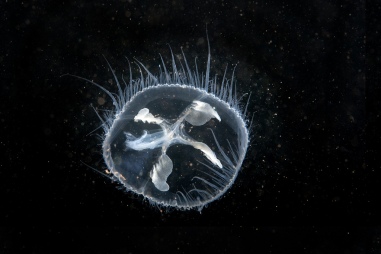
Authors
Luciano Caputo, Pirjo Huovinen, Ruben Sommaruga, Iván Gómez
Craspedacusta sowerbii is a global invader of inland waters, but little is known on what environmental factors control its colonization success. We hypothesized that water transparency and thus, exposure to UV radiation are relevant for the colonization success of this relatively transparent invasive hydroid. Here we used field and laboratory experiments to assess the effect of natural solar radiation and artificial UV radiation on the medusa stage of C. sowerbii across natural and simulated water transparency gradients in three Chilean Patagonian lakes. Short-term exposure of the jellyfish to artificial UV radiation under low Dissolved Organic Carbon (DOC) treatments induced mortality and caused sublethal effects such as swimming anomalies and production of reactive oxygen species. Outdoor exposure of jellyfish to full solar radiation in the most transparent water (Lake Ranco; DOC = 0.6 mg l−1) resulted in almost complete mortality. However, higher DOC contents provided partial or almost complete protection against the adverse impact of UV radiation. Overall, our findings provide evidence of the role of underwater light conditions in the underlying mechanisms that may favor the invasion of this gelatinous alien species in inland waters. The results imply that under the current “brownification” of lakes, an increase in water color might provide more favorable conditions for the invasion process of this hydroid.
